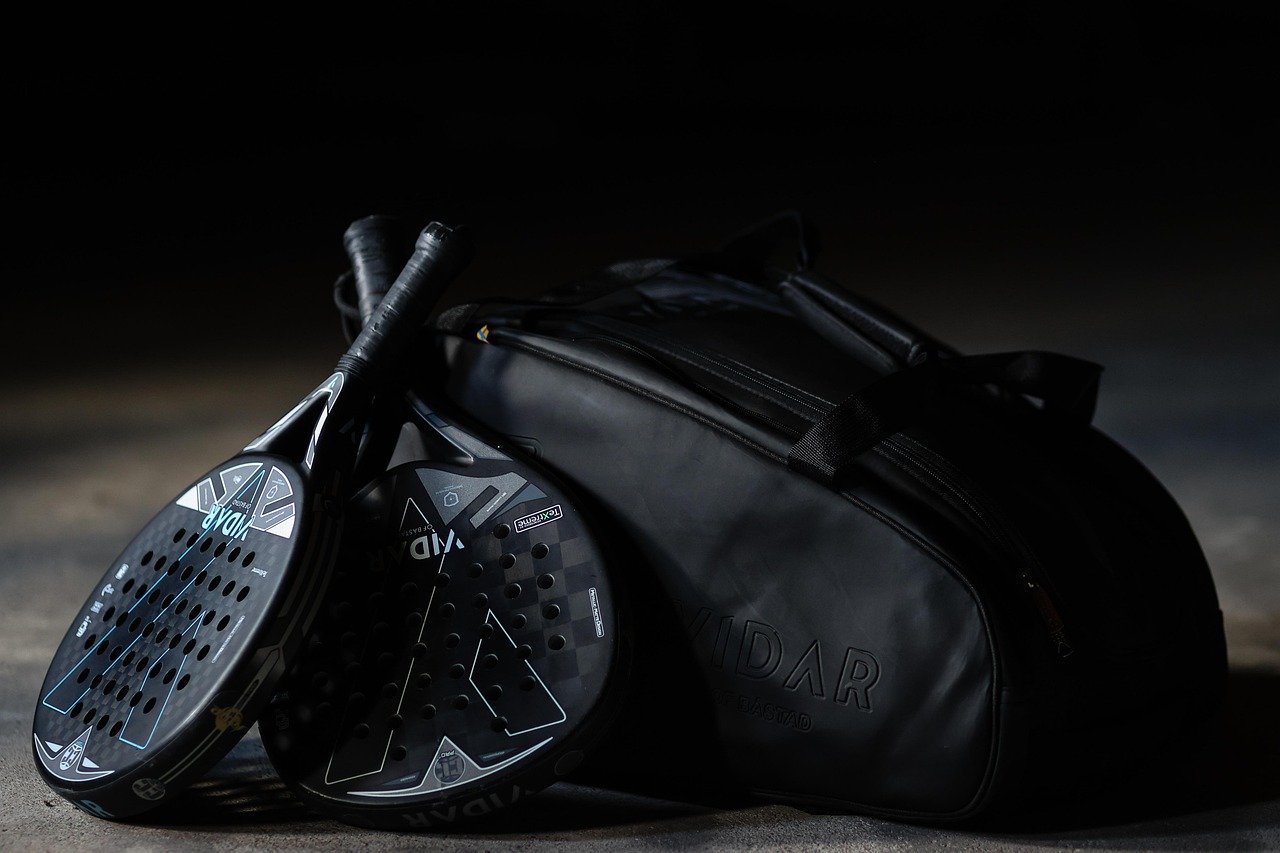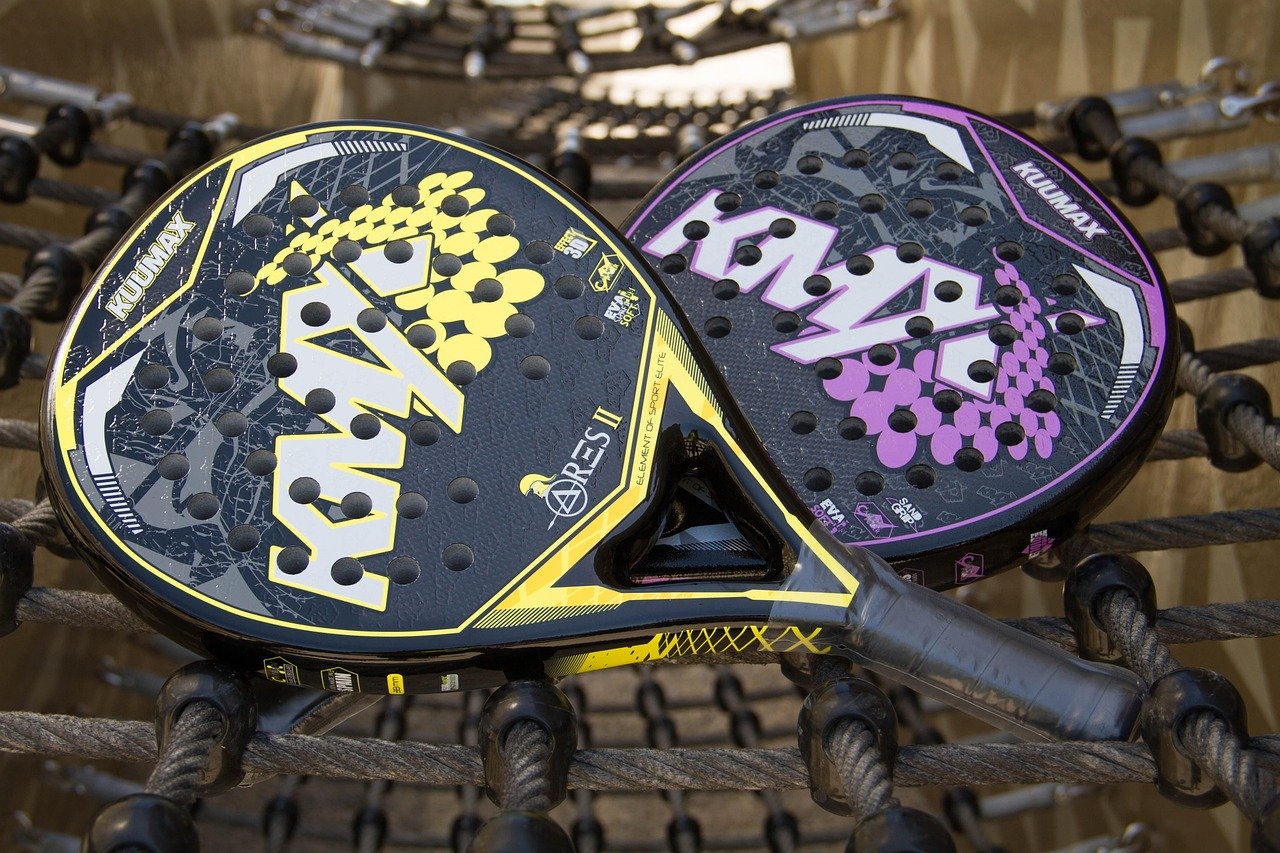As padel continues to explode in popularity worldwide, more players are looking to invest in the right gear to help them play their best. Whether you’re stepping onto the court for the first time or levelling up for competitive play, the equipment you use can significantly impact your performance and comfort.
This comprehensive guide breaks down all the essential padel equipment — from rackets and balls to shoes and accessories — and explains how to choose the best options for your playing style, skill level, and goals.
Padel Rackets: Your Most Important Tool
Padel rackets (or paddles) are very different from tennis rackets. They are solid, perforated, and slightly smaller, with no strings. Choosing the right one can elevate your control, power, and confidence on court.
Key Features to Consider
- Shape: Rackets come in three shapes: round, diamond, and teardrop.
- Round: Best for control and beginners
- Diamond: Powerful, suited for advanced players
- Teardrop: A hybrid offering a balance between power and control
- Weight: Most rackets range from 340g to 390g.
- Lighter rackets (340–360g): Easier to manoeuvre, better for control
- Heavier rackets (370–390g): Provide more power but require more strength
- Balance: Refers to the weight distribution across the racket.
- Low balance: Easier to control
- High balance: Better for powerful shots
- Core Material: Most rackets use EVA foam or polyethylene.
- EVA: Durable, firm, and suitable for aggressive players
- Polyethylene: Softer, offering better touch and comfort
- Surface Texture: Some rackets feature a rough surface for extra spin control.
Choosing a Racket Based on Skill Level
- Beginners: Look for round-shaped rackets with soft cores and even balance
- Intermediate: Teardrop shapes, medium weight, EVA cores
- Advanced/Professional: Diamond-shaped rackets, heavier weight, textured surface
Padel Balls: Similar but Not Identical to Tennis Balls
While they may look similar, padel balls are specially designed for the sport.
Padel Ball Characteristics
- Pressure: Slightly less pressurised than tennis balls to suit the smaller court and enclosed play
- Bounce: Lower bounce, promoting longer rallies
- Durability: Built for synthetic turf surfaces, usually with high-quality felt
Popular Ball Brands
- Head Padel Pro (used on World Padel Tour)
- Wilson Padel X3
- Babolat Padel Tour
When to Replace Balls
- After 3–5 matches, depending on playing frequency and surface type
- Signs: Loss of pressure, bounce, or felt wear
Padel Shoes: Support, Grip and Movement
Regular tennis or running shoes are not ideal for padel. Padel-specific shoes are designed with lateral stability and turf traction in mind.
What to Look For
- Outsole Pattern: Herringbone tread provides optimal grip on artificial turf
- Lateral Support: Reinforced sides for quick side-to-side movements
- Cushioning: Helps absorb impact, especially for longer matches
- Durability: Reinforced toe area helps withstand toe drags and court friction
Top Brands for Padel Shoes
- Asics Gel-Padel Series
- Babolat Jet Premura
- Adidas CourtJam Control
- Nox AT10 Shoes (used by pro player Agustín Tapia)
Padel Apparel: Comfort Meets Performance
Padel clothing may resemble typical sportswear, but top players invest in gear optimised for play.
- Moisture-Wicking Fabrics: Keeps you dry in long games
- Stretch Material: Allows full range of movement
- UV Protection: Especially important for outdoor play
- Compression Wear: Used for muscle support and recovery
Must-Have Accessories
While not essential to start, the right accessories can improve your comfort and consistency.
Grips and Overgrips
- Improve comfort, absorb sweat, and customise racket feel
- Replace regularly to maintain performance
Wristbands and Headbands
- Absorb sweat, keeping your hands and eyes dry
Padel Bags
- Designed with thermal compartments to protect your racket from temperature changes
- Separate sections for shoes, balls, and clothing
Sunglasses and Caps
- Reduce glare in outdoor matches
- Look for sport-specific sunglasses with wrap-around designs
Technology and Smart Gear
Many players are now incorporating tech into their game:
- Smart Sensors: Attach to your racket to track swing speed, impact zones, and more
- Apps: Analyse your game, log sessions, and compare stats
Tips for Buying Padel Equipment
- Try Before You Buy: Many clubs offer demo rackets
- Don’t Over-Invest Early: Start with mid-range gear and upgrade as you improve
- Buy From Reputable Sources: Ensure authenticity, especially for rackets and balls
- Match Gear to Playing Style: Aggressive players need different specs than defensive ones
Final Thoughts
The right padel equipment does more than just look good on court — it helps you play smarter, safer, and more effectively. By understanding the key features of rackets, balls, shoes, and accessories, you can make informed choices that suit your needs and elevate your experience.
Whether you’re playing socially, training regularly, or aiming for tournament-level performance, investing in quality gear is a step toward becoming the player you want to be.


